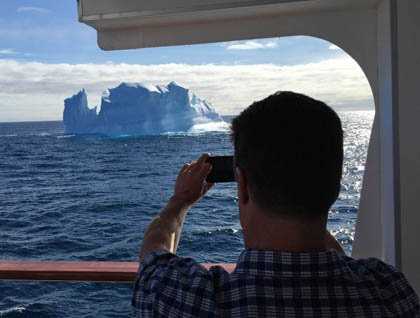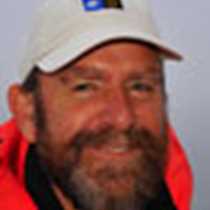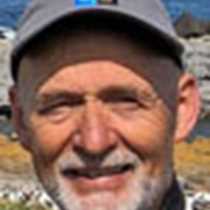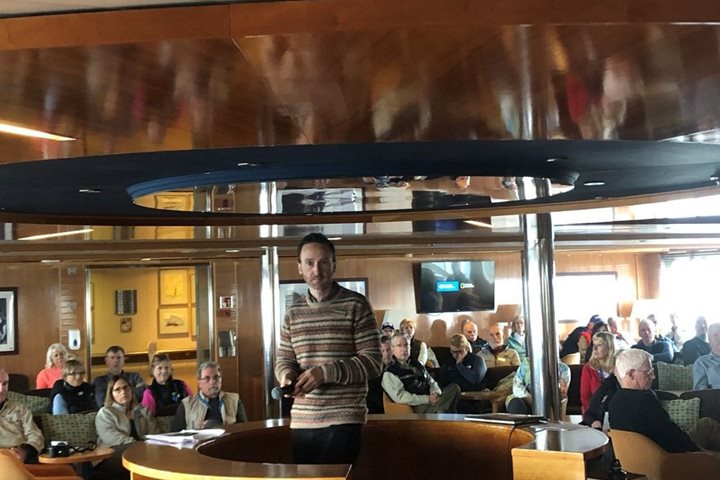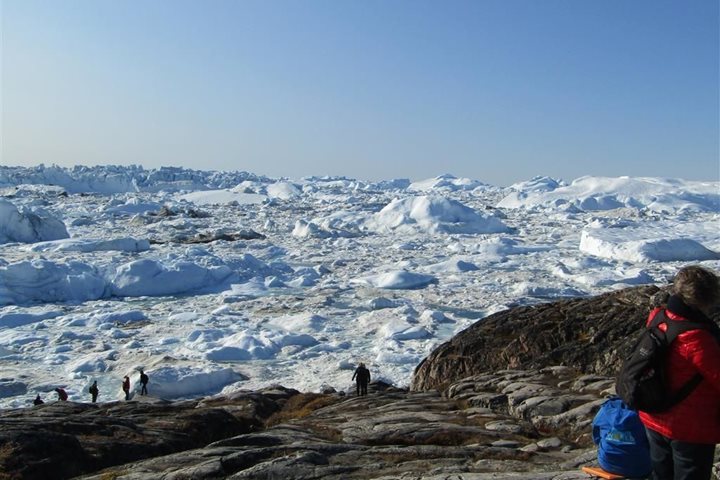The first instinct on waking is to peer out of the porthole to gauge the day. I see a lively sea with a steady north wind. Good news: might this start to shift some of the logjam of sea ice that is blocking the east coast of Baffin Island? The summer pack ice, which normally streams down from Baffin Bay into the Davis Strait has all been bunched tight against the coast by sustained southeast winds. This then plugs the fjords and prevents the fast ice inland from escaping. For most of the settlements at the head of these fjords this has meant some hardship: they are three weeks behind this summer, many still waiting for food and fuel supplies to reach them by ship. The second porthole peek is a dark, streamlined shape sweeping past over the sea: a pomarine jaeger, a predatory seabird which thrives on lemmings in a good year, but still manages to make an additional living by thieving fish from any other passing seabirds. That’s reason enough to dress, grab binoculars and make for the bridge. But once there, the seabirds are forgotten: the horizon is dotted with a veritable parade of frozen sails—there are icebergs everywhere. For most of the rest of the day, there is cavalcade of majestic bergs, each spotlit in turn by passing sunbeams. It is a gallery of delights, an impromptu regatta of glacial dreadnoughts. When hit by the sun against an indigo sky they are dazzling. One has a series of spires like an eastern temple. Another, a bowsprit like a drifting man o’war. A third with two spaced towers, still linked by a turquoise causeway, is all that remains of some giant tabular berg. But the finest, catching the sun on its flanks, looks like a white ice palace with glistening facets lit like so many ornate windows.
This lazy day at sea also gave us time for a series of presentations to add insight to our outlook. Vinnie, our archaeologist, traced the history of the Vikings who settled for 500 years on the southwest coast of Greenland, establishing trade links with the Inuit of Canada. Examples of woven yarn, unmistakably European, have been found in several sites in Baffin, along with whalebone peat spades. Then our Arctic briefing on protocols for the wilderness, conservation, clothing, Zodiac safety, and behavior in bear country.
After lunch Ian gave us a wide-ranging introduction to Arctic ecology, from midge to muskox and diatom to leviathan, then Rich Reid taught us clever tricks the iPhone can perform for more creative photographs.
After dinner we watched the remarkable 1920s film Nanook of the North, a brilliant amateur documentary of the hunting and survival techniques of Hudson Bay Inuit, a way of life which had virtually gone within 50 years of its making. But the day had one last great surprise in store, for at 11 at night we came alongside pack ice off the Baffin coast and within 30 dramatic minutes our first polar bear was espied, a big male close to a seal kill, with a second bear further away in the ice. It is a mistake to sleep too long or too early here: from icebergs to ice bears all in a single day!

